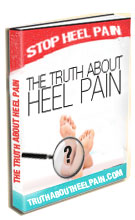Night Splints and Plantar Fasciitis
When you have plantar fasciitis, one of the possible treatment modalities is using a night splint. Plantar fasciitis is the painful, often debilitating inflammation of the plantar fascia. The plantar fascia runs from the bottom of the heel bone to the base of the toes, and it is involved in just about every flexion and extension of your foot. When this ligament is overused, it develops tears along its length, and the body acts with inflammation to heal it. Unfortunately, this inflammation causes even more pain.
Night splints are a conservative way of treating plantar fasciitis. They are great for extending the toes and flexing the foot to ensure proper range of motion. They keep the foot stretched out and prevent the accumulation of blood in the foot that causes inflammation. Night splints can be difficult to wear at times because they are large, but many types of splints are available. Don’t give up on splints if the first type doesn’t work, because you may find that a different type is just what you need.
Dorsal Night Splints
Dorsal night splints run across the top of the foot and rarely extend beyond the top of the ankle. They are simpler than boot splints and are not as large. Dorsal night splints pull your toes towards your knee to provide the stretch known as dorsiflexion. This keeps your calf muscle, your Achilles tendon, and the other muscles in your foot stretched out. With properly stretched muscles, you put less strain on your plantar fascia and can walk without pain. These splints usually have three or four straps, but they do not allow for the increase or decrease of flexion. For this reason they are more comfortable, but they may not be as effective as the other splints.Boot Night Splints
Boot night splints are the most common type of splint, but many find them uncomfortable. They are large and are stiff along the back of the leg. They have a hard outer shell with a soft bed interior for comfort. This device not only provides dorsiflexion to the foot and stretches out the Achilles tendon, but it also stretches the calf muscle which is often implicated in plantar fasciitis pain. You can also adjust the level of flexion with this boot and achieve 10 to 30 degrees of flexion of the foot. With this range of flexion, you can start with the lowest amount of stretch and slowly increase the flexion as your condition improves. This device is the most common and most recommended among the plantar fasciitis night splints.Soft Night Splints
Soft night splints are designed like socks and slip over the foot and heel. They are soft, without the hard outer plastic of the boot splints. When you put on this device, a strap runs from the toes to the top of the splint at the ankle to provide the flexion. As an added advantage, this splint allows for an angle of flexion from 10 to 20 degrees. It isn’t as good as the boot splint, but this makes it marginally better than the dorsal splint. If you find that you need variable flexion but can’t sleep with the large boot splint, then a soft night splint may be just enough flexion to help with your plantar fasciitis pain.Start your heel pain treatment immediately
There are many factors the cause heel pain and plantar fasciitis. It is important to identify what are the factors (like body weight, shoes, muscle tightness ect..) that can cause your heel pain. Unfortunately no 2 people are the same so what has worked for some will not work for others. Fortunately we have put together an ebook that can assess your risk factors and guide you through your plantar heel pain and plantar fasciitis treatment today.Start your heel pain treatment today.
